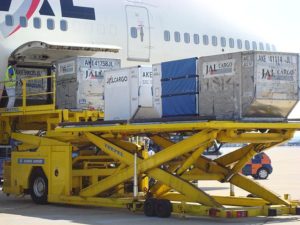
The air freight forwarding market grew by 10.2% in real terms in 2017, spurred by the rapid acceleration in global demand that led to the need to restock inventories, said the report entitled “Global Freight Forwarding 2018.”
“The acceleration in growth, which was largely unanticipated at the beginning of the year, meant shippers needed to get products to market more rapidly. Faced with higher than expected demand, shippers utilised more expensive, but faster air freight services over sea,” said the report.
Growth in the air freight forwarding market was also led by strength in key vertical sectors, such as pharmaceuticals and e-commerce.
The sea freight forwarding market grew 5.6% last year, twice as fast as the year previous and the strongest since 2011. Its market is more closely aligned with international trade volume growth than the air freight market. The IMF’s estimate for international trade volume growth was between 5.2% and 5.5% in 2017.
Overall, forwarding growth was broad-based, but increased demand and manufacturing output from North America and Europe was pivotal to the resurgence, said Ti.
China’s market also experienced strong growth, as its economy reversed the downward growth trend of the past six years. Its shift towards consumer spending is significantly altering trade patterns. During the year, eastbound air freight volumes (Europe-Asia) in certain key markets had begun to exceed westbound volumes for the first time.
There were also stark turnarounds in South America, Sub-Saharan Africa and Russia, Caucasus, and Central Asia. Growing Chinese influence is playing a big part in each region’s development. Growing demand for fresh agricultural produce from Brazil, increased infrastructure investment in Ethiopia and growing trade links with Russia related to the Belt and Road program are all examples of positive contributing factors to the countries’ respective forwarding markets.
Looking ahead, Ti said the market faces significant downside risks in the short to medium term. “The growing prominence of regional trade blocs will tend to favour road-based transport, and particularly in Asia, low value, low margin shipping. Near-sourcing induced by smarter manufacturing techniques and rising wages could lead to a shift from inter- to intra-regional trade. China’s Belt and Road ambitions make the possibility of East-West modal shifts to rail a genuine option for some shippers. Protectionism could be detrimental to volumes on key trade lanes,” it observed.
“Even so, the market is expected to grow at a real 2017-2022 compound annual growth rate (CAGR) of 4.7%. This would prove to be stronger than the CAGR of the previous five years (3.7%), indicating that growth in 2017, although exceptional, is a sign of good things to come,” said Ti.
Photo: Dtom









